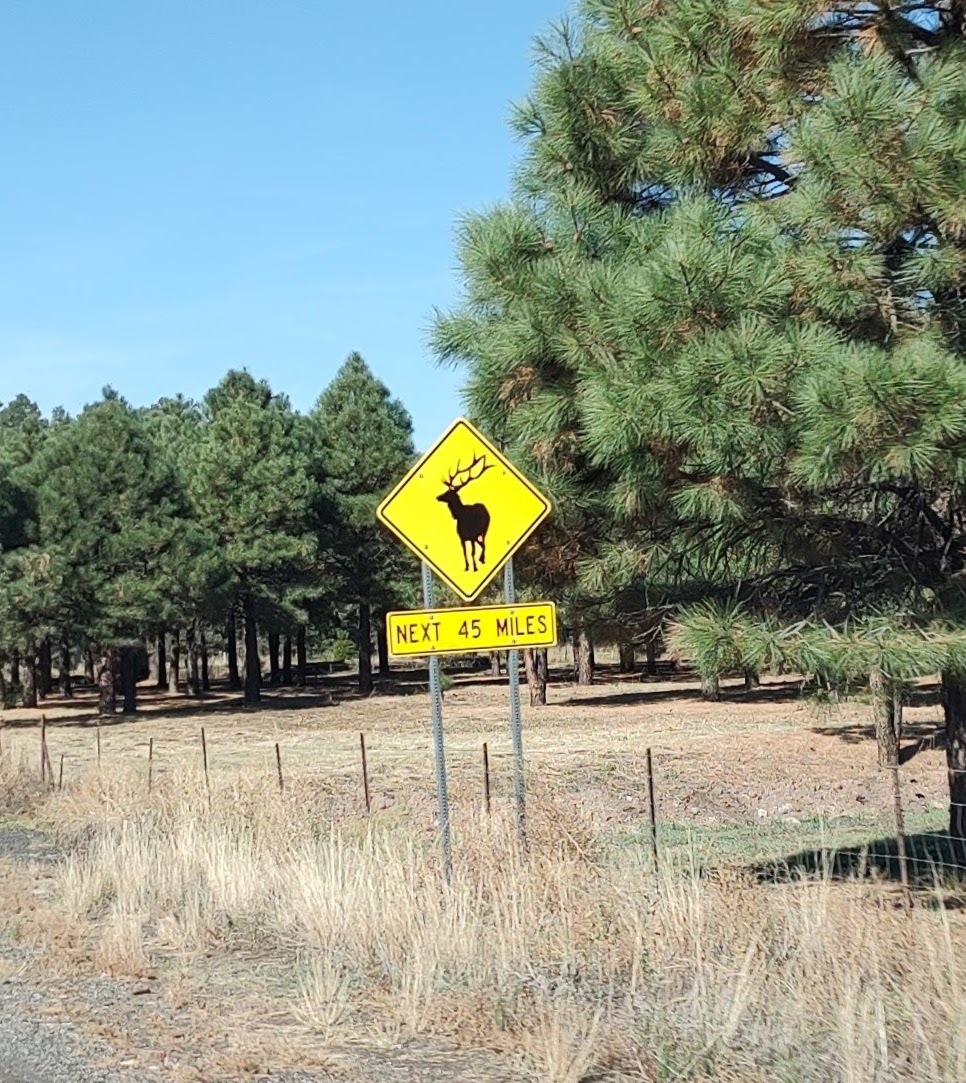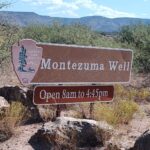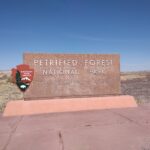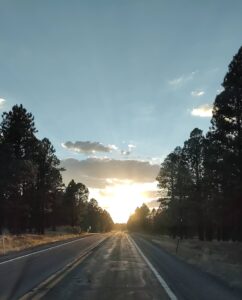
We all grew up seeing the pictures on post cards, seeing images in movies, and the occasional family member telling us about their firsthand experiences. Some of our favorite childhood sitcoms often featured an episode about the Grand Canyon. I distinctly remember the episode where the Brady Bunch went to the Grand Canyon. Throughout our lives, it’s one of those places that we all dream of a long road trip in the station wagon to stand on the rim of a gigantic cliff overlooking the Colorado River at the bottom. The truth is, until you actually see this wonder, you don’t really grasp the vastness of it. How truly magnificent it is to stand on the rim of a sheer cliff and feel that little twinge in your belly as reality hits you in the moment.
During our drive to the canyon, we were taken aback by the terrain. In our minds, we always pictured the Grand Canyon as this gigantic trench cut into the desert by the flowing Colorado River, and atop both sides of the canyon, lay miles of dry desert rock and sand. Nothing could be further from the truth. As we drove through Cities like Flagstaff, which reach elevations of over 8000 feet, we loved the feel of the mountains and tall pines that lined the road. It was then we started to realize, the Grand Canyon is a beautiful place, nestled in the mountains, bordered by a forest of woodland. Elk, Mule deer, and other woodland creatures inhabit the area around.
The Grand Canyon Historically Speaking
The Grand Canyon National Park is over 1.2 million acres. Though President Roosevelt established it as a National Monument in 1906, it wasn’t until 1919 that it was granted National Park status. The canyon, and all of its branch off canyons show a history of millions of years of erosion by water and especially the Colorado River, which literally carved the canyon into the Earth.
Visitors today most frequently access the Grand Canyon via the North Rim and South Rim, but the South Rim accounts for more than 90% of the park’s visitors. In fact, during our first visit, we too chose the South Rim. Near the South Rim is the park’s headquarters, at The Grand Canyon Village.
The Grand Canyon Village is home to several historic sites. The most prominent is the Grand Canyon Railroad Depot from 1901, which is one of only 3 remaining RR depots made with logs. Also at the village is the Horace M. Albright Training Center, which is used for training of all the new NPS service employees. The El Tovar Hotel built in 1903 and is still open for business this day. Near the hotel is the El Tovar Stables, built in 1904 and was used to shelter mostly horses and mules that carried people and supplies around the canyon. Other buildings and historic places around the village include early residences, lodges, a mercantile, and shops. Many of which are still operational and intact from over 100 years of work. You can also take an educational voyage back through time, as you descend the depths of the Grand Canyon on horseback or mule. The layers of rock in the walls of the canyon tell a history spanning millions of years, and you can travel backwards through those years with guided tours as you go.
Our Visit to The Grand Canyon
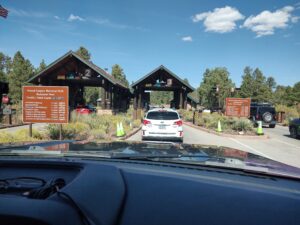
Coming from the south, we took I-17 past Sedona, through Flagstaff, and then on to N Highway 180 to State Route 64. Once we arrived at the South Entrance, we used our Annual National Park Pass to enter free into the park. Something at all National Parks that always catches us off guard, is the sheer size of the park. It can be several miles between landmarks or stops inside the park. Coming from rural Indiana, we are used to state parks, where everything is just within a couple of miles in the park.
Once at the South Rim, we took a short walk to the first lookout point. The size was nothing less than shocking. It’s as if you are looking at a building sized mural, painted by God, from just feet away. The first view is just breathtaking in the most literal way. Your mind has a hard time wrapping itself around what exactly you are looking at. As you walk the easy paved path around the South Rim observation level, you can stop for pictures at many locations. Each and every view of the canyon gives a different perspective and a different viewpoint. There are even points where you can step off the normal path and “take life into your own hands,” and stand at the edge of the canyon.
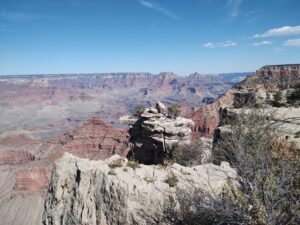
When you are done walking, you can return to the nearby South Rim Visitor Center, buy souvenirs in the local shop, or buy goods sold inside the park by Native American Artisans. From this point, you can also board free park shuttles that will take you on a long 4-hour voyage around the South Rim, stopping at each vantage point and allowing you time to view, explore, and take photos. After leaving this area, there are many options while in the South Rim area. Camping, hiking, shopping, dining, and even a train ride is available throughout the park and at the Grand Canyon Village. We took advantage of lunch and a beer at one of the pubs located inside the park. We spent the entire last half of the day at the South Rim and left feeling like we had barely scratched the surface.
During our drive back, we had the pleasure of seeing Elk and Mule Deer along the road between the Grand Canyon and Flagstaff. It was a day we had dreamed of our whole lives and a day we will remember for the rest of them.
